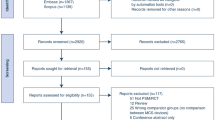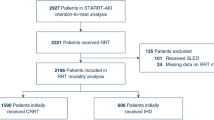Abstract
Background
Gastrointestinal bleeding (GIB) is a common adverse event after mechanical circulatory support device implantation. However, the majority of the reported data were obtained from small single-center studies. Our aim was to study the prevalence and predictors of GIB during the index hospitalization of mechanical circulatory support devices implantation using a nationwide database.
Methods
Nationwide inpatient sample (2009–2011) was used to perform a retrospective cross-sectional study. Adult patients with discharge diagnosis codes of congestive heart failure and procedure codes of left-ventricular assist device (LVAD) or intra-aortic balloon pump (IABP) implantation or orthotopic heart transplant (OHT, reference group) were identified. Our outcome was GIB during the index hospitalization when the device was implanted. Predictors that achieved statistical significance on the univariate analysis were included in a multivariable logistic-regression analysis.
Results
A total of 87,462 patients were included, 87 % of the patients received an IABP, 6 % received LVAD, and 5 % underwent OHT. Prevalence of GIB was 8, 5, and 3 % among those who had LVAD, IABP implantation, and OHT recipients, respectively (p < 0.001). Patients who underwent LVAD implantation had twofold increase in the prevalence of GIB (OR 2.1, 1.7–2.5, p < 0.001) when using IABP or OHT groups as a reference. This increase in the prevalence was not demonstrated among IABP recipients on a multivariate level.
Conclusion
Prevalence of GIB was higher among LVAD compared to OHT and IABP recipients and could occur as early as the index admission of the device implantation.


Similar content being viewed by others
References
Kirklin JK, Naftel DC, Pagani FD, et al. Sixth INTERMACS annual report: a 10,000-patient database. J Heart Lung Transplant. 2014;33:555–564.
McIlvennan CK, Magid KH, Ambardekar AV, Thompson JS, Matlock DD, Allen LA. Clinical outcomes after continuous-flow left ventricular assist device: a systematic review. Circ Heart Fail. 2014;7:1003–1013.
Harvey L, Holley CT, John R. Gastrointestinal bleed after left ventricular assist device implantation: incidence, management, and prevention. Ann Cardiothorac Surg. 2014;3:475–479.
Jabbar HR, Abbas A, Ahmed M, et al. The incidence, predictors and outcomes of gastrointestinal bleeding in patients with left ventricular assist device (LVAD). Dig Dis Sci. 2015;60:3697–3706.
Draper KV, Huang RJ, Gerson LB. GI bleeding in patients with continuous-flow left ventricular assist devices: a systematic review and meta-analysis. Gastrointest Endosc. 2014;80:435.e431–446.e431.
French JB, Pamboukian SV, George JF, et al. Gastrointestinal bleeding in patients with ventricular assist devices is highest immediately after implantation. ASAIO J. 2013;59:480–485.
Geisen U, Heilmann C, Beyersdorf F, et al. Non-surgical bleeding in patients with ventricular assist devices could be explained by acquired von Willebrand disease. Eur J Cardiothorac Surgery. 2008;33:679–684.
Letsou GV, Shah N, Gregoric ID, Myers TJ, Delgado R, Frazier OH. Gastrointestinal bleeding from arteriovenous malformations in patients supported by the Jarvik 2000 axial-flow left ventricular assist device. J Heart Lung Transplant. 2005;24:105–109.
Eckman PM, John R. Bleeding and thrombosis in patients with continuous-flow ventricular assist devices. Circulation. 2012;125:3038–3047.
Kantrowitz A. Experimental augmentation of coronary flow by retardation of the arterial pressure pulse. Surgery. 1953;34:678–687.
(HCUP) HCaUP. Nationwide Inpatient Sample. USA: Healthcare Cost and Utilization Project (HCUP). http://www.hcup-us.ahrq.gov/nisoverview.jsp. Accessed January 12, 2015.
Mulloy DP, Bhamidipati CM, Stone ML, Ailawadi G, Kron IL, Kern JA. Orthotopic heart transplant versus left ventricular assist device: a national comparison of cost and survival. J Thorac Cardiovasc Surg. 2013;145:566–573 (discussion 564–573).
Strate LL, Ayanian JZ, Kotler G, Syngal S. Risk factors for mortality in lower intestinal bleeding. Clin Gastroenterol Hepatol. 2008;6:1004–1010.
Wysocki JD, Srivastav S, Winstead NS. A nationwide analysis of risk factors for mortality and time to endoscopy in upper gastrointestinal haemorrhage. Aliment Pharmacol Ther. 2012;36:30–36.
Navaneethan U, Njei B, Venkatesh PG, Sanaka MR. Timing of colonoscopy and outcomes in patients with lower GI bleeding: a nationwide population-based study. Gastrointest Endosc. 2014;79:297.e212–306.e212.
Abougergi MS, Travis AC, Saltzman JR. The in-hospital mortality rate for upper GI hemorrhage has decreased over 2 decades in the United States: a nationwide analysis. Gastrointest Endosc. 2015;81:882–888.
Khera S, Kolte D, Aronow WS, et al. Trends in acute kidney injury and outcomes after early percutaneous coronary intervention in patients ≥75 years of age with acute myocardial infarction. Am J Cardiol. 2013;112:1279–1286.
Lenihan CR, Montez-Rath ME, Mora Mangano CT, Chertow GM, Winkelmayer WC. Trends in acute kidney injury, associated use of dialysis, and mortality after cardiac surgery, 1999 to 2008. Ann Thorac Surg. 2013;95:20–28.
Waikar SS, Wald R, Chertow GM, et al. Validity of international classification of diseases, ninth revision, clinical modification codes for acute renal failure. J Am Soc Nephrol. 2006;17:1688–1694.
Taefi A, Cho WK, Nouraie M. Decreasing trend of upper gastrointestinal bleeding mortality risk over three decades. Dig Dis Sci. 2013;58:2940–2948.
Feldman D, Pamboukian SV, Teuteberg JJ, et al. The 2013 international society for heart and lung transplantation guidelines for mechanical circulatory support: executive summary. J Heart Lung Transplant. 2013;32:157–187.
Islam S, Cevik C, Madonna R, Frandah W, Islam E, Nugent K. Left ventricular assist devices and gastrointestinal bleeding: a narrative review of case reports and case series. Clin Cardiol. 2013;36:190–200.
Kushnir VM, Sharma S, Ewald GA, et al. Evaluation of GI bleeding after implantation of left ventricular assist device. Gastrointest Endosc. 2012;75:973–979.
Aggarwal A, Pant R, Kumar S, et al. Incidence and management of gastrointestinal bleeding with continuous flow assist devices. Ann Thorac Surg. 2012;93:1534–1540.
Slaughter MS. Hematologic effects of continuous flow left ventricular assist devices. J Cardiovasc Transl Res. 2010;3:618–624.
Authors’ Contributions
Ali Abbas contributed to study concept and design; acquisition of data; statistical analysis; interpretation of the results; drafting of the manuscript; critical revision of the manuscript for important intellectual content. Ahmed Mahmoud contributed to study design, interpretation of the results; drafting of the manuscript and critical revision of the manuscript for important intellectual content. Mustafa Ahmed contributed to interpretation of the results; critical revision of the manuscript. Juan Aranda Jr. contributed to interpretation of results and critical revision of the manuscript. Charles T. Klodell Jr. contributed to interpretation of results and critical revision of the manuscript. Peter V. Draganov contributed to study concept and design; interpretation of the results; drafting of the manuscript; critical revision of the manuscript, and supervision of research activity.
Author information
Authors and Affiliations
Corresponding author
Ethics declarations
Conflict of interest
All authors have no potential conflicts (financial, professional, or personal) that are relevant to this manuscript. The study was conducted, and the manuscript was written and reviewed solely by the authors.
Appendices
Appendix 1: Identification of Gastrointestinal Bleeding
We used previously reported criteria to identify the spectrum of GIB from ICD9 in the NIS database [13–15]. GIB was identified by the presence of a specific code of cause with hemorrhage (example: duodenal ulcer with hemorrhage), or code of potential GIB cause and code of nonspecific GIB (duodenal ulcer + hematemesis or blood in stool codes), or code of GIB cause and code acute hemorrhagic anemia, or code of hematemesis or blood in stool codes (with no specific GI source), were classified as GIB not otherwise specified (NOS).
Based on the ICD9 codes, the final classification of GIB source and causes was as follows, upper GIB including: esophageal variceal bleed, non-variceal esophageal bleed, such as, esophagitis, ulcer, and Mallory–Weiss syndrome (MW), gastro-duodenal-jejunum pathology including ulcer, or inflammation, upper GI AVM and upper GIB NOS. Lower GIB including: AVM, diverticulosis, hemorrhoids or anal fissure, neoplastic lesions including polyps, or cancer, colitis, colon ulcer, ischemic colitis and lower GIB NOS. And GIB NOS if no code for potential source was found. Groups could overlap with the presence of more than one source.
Other Predictors of GIB Definitions
We identified acute complications that might have occurred during hospitalization, like AKI. For that purpose, we implemented previously used and validated algorithm [17, 18]. AKI was defined as the presence of specific ICD9 codes. AKI required dialysis (AKI/HD) was identified by the presence of AKI codes with hemodialysis codes, in the absence of end-stage renal disease (ESRD) codes. Presence of dialysis code without AKI codes and/or presence of ESRD specific codes identified ESRD. Patients with chronic kidney disease (CKD) codes were identified. Those with ESRD are mutually exclusive with the other groups of patients. However, patients with CKD can have AKI or AKI-HD [17–19].
We identified the occurrence of sepsis using a previously reported combination of ICD9 codes [17, 18]. Additionally, the occurrence of DIC, DVT, and pulmonary embolism were identified. The need for intubation—mechanical ventilation, and enteral or parenteral feeding were identified and included in the analysis as they can reflect the overall clinical severity. Liver disease was classified to mild (without complication of portal hypertension) and moderate to severe (with portal hypertension complications). Full list of the ICD9 codes that were used in this study is provided in the Appendix 2.
Appendix 2
Rights and permissions
About this article
Cite this article
Abbas, A., Mahmoud, A., Ahmed, M. et al. Gastrointestinal Bleeding During the Index Hospitalization for Mechanical Circulatory Support Devices Implantation, a Nationwide Perspective. Dig Dis Sci 62, 161–174 (2017). https://doi.org/10.1007/s10620-016-4271-6
Received:
Accepted:
Published:
Issue Date:
DOI: https://doi.org/10.1007/s10620-016-4271-6




